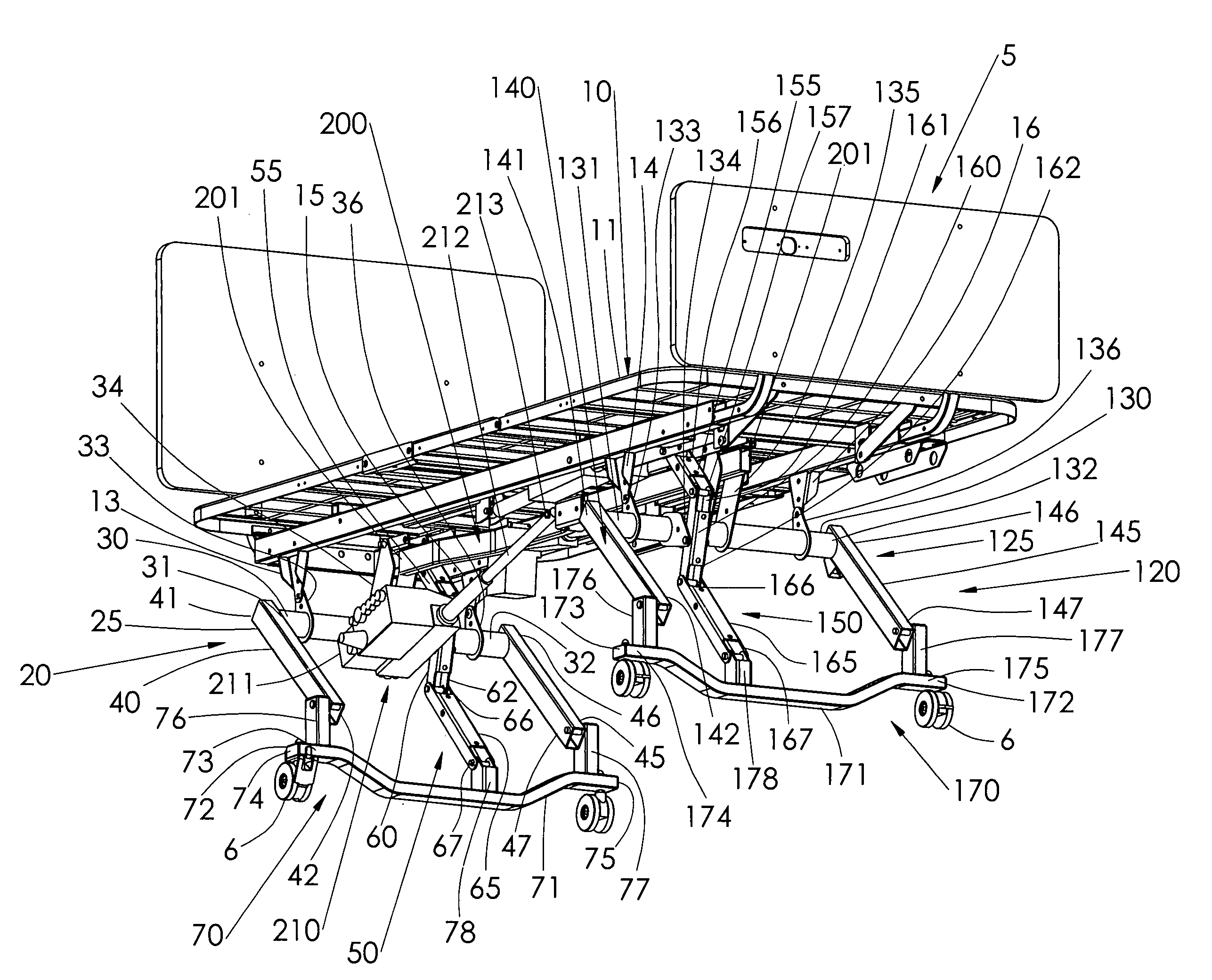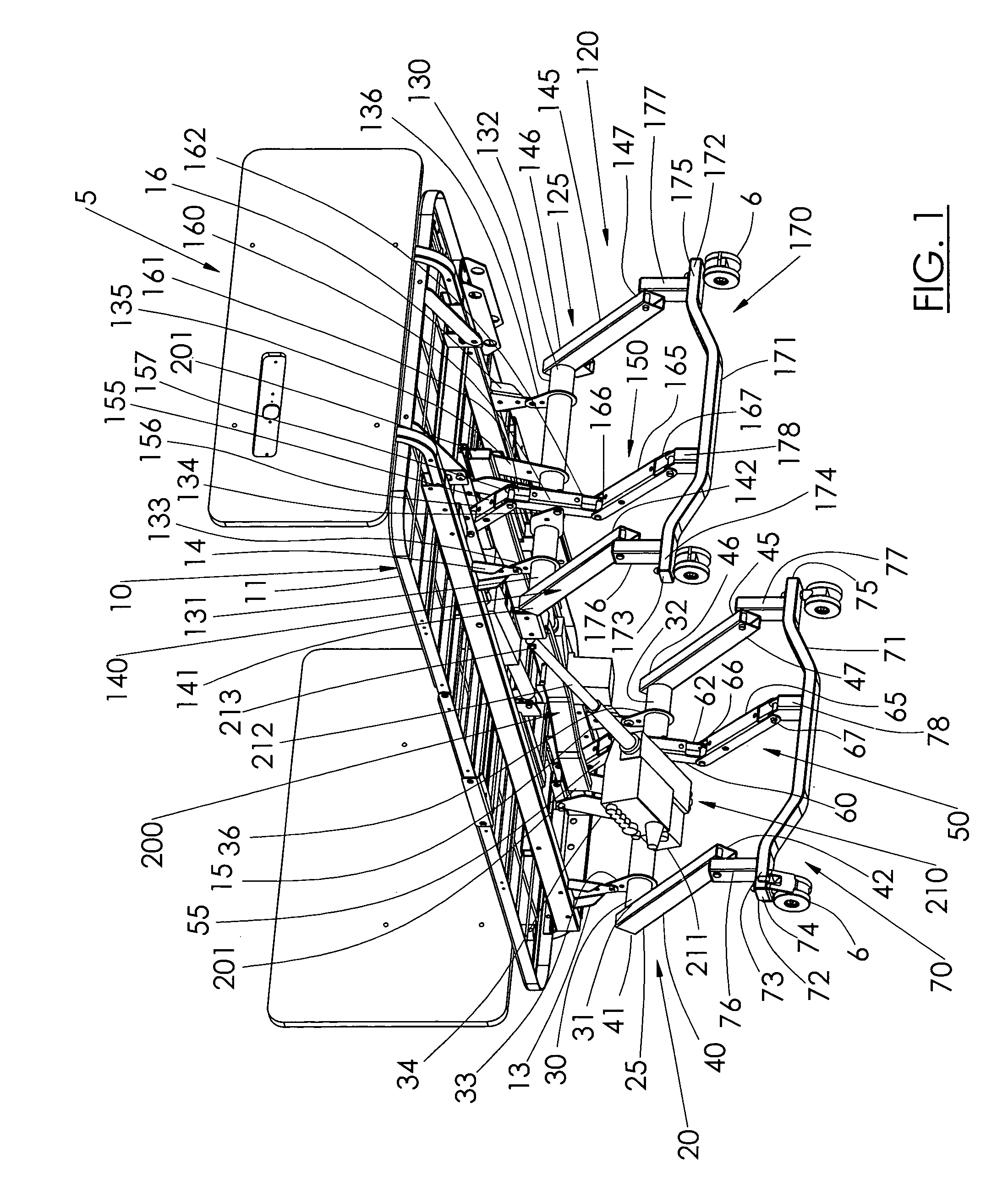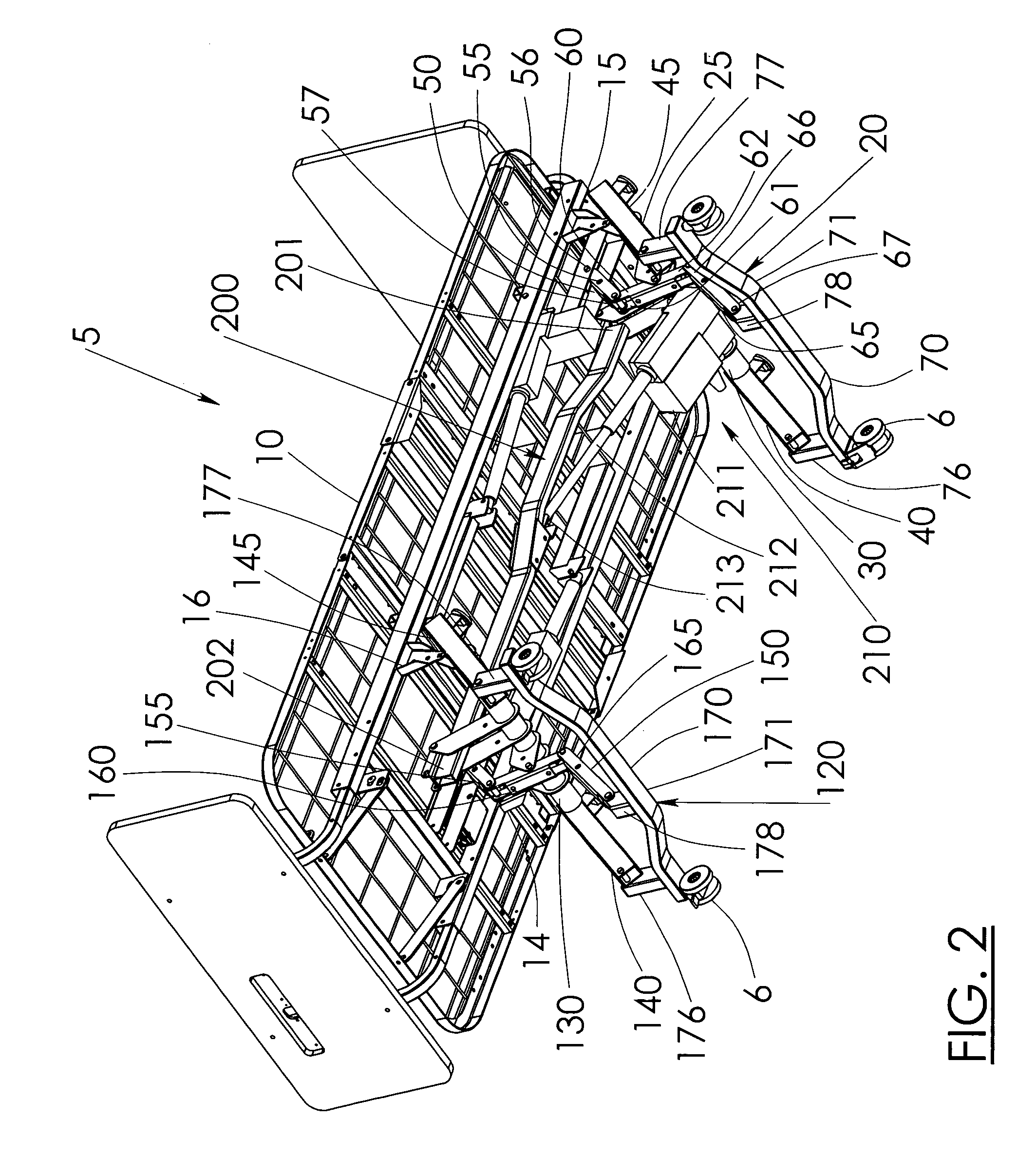Support frame with articulating structures
a support frame and structure technology, applied in the field of support frames, can solve the problems of unfavorable mechanical performance of the actuator, unfavorable mechanical stability of the actuator, so as to reduce the potential for undesirable consequences, and reduce the effect of bending
- Summary
- Abstract
- Description
- Claims
- Application Information
AI Technical Summary
Benefits of technology
Problems solved by technology
Method used
Image
Examples
Embodiment Construction
[0033]While the invention will be described in connection with referred embodiments, it will be understood that it is not intended to limit the invention to those embodiments. On the contrary, it is intended to cover all alternatives, modifications and equivalents as may be included within the spirit and scope of the invention as defined by the appended claims.
[0034]The preferred embodiments of the present invention are shown and described in relation with a bed 5 having four casters 6. The casters 6 of the bed 5 preferably rest on a floor 1 lying in a plane 2. In a preferred embodiment, the bed 5 has a frame 10, a first articulating structure 20, a second articulating structure 120, a drag link 200 and a linear drive assembly 210. The bed frame 10 is understood to include deck assemblies and the like, however, for the sake of clarity, the frame 10 will be described as a single structure. Of course, the principles of the present invention are applicable to beds having frames with di...
PUM
 Login to View More
Login to View More Abstract
Description
Claims
Application Information
 Login to View More
Login to View More - R&D
- Intellectual Property
- Life Sciences
- Materials
- Tech Scout
- Unparalleled Data Quality
- Higher Quality Content
- 60% Fewer Hallucinations
Browse by: Latest US Patents, China's latest patents, Technical Efficacy Thesaurus, Application Domain, Technology Topic, Popular Technical Reports.
© 2025 PatSnap. All rights reserved.Legal|Privacy policy|Modern Slavery Act Transparency Statement|Sitemap|About US| Contact US: help@patsnap.com



